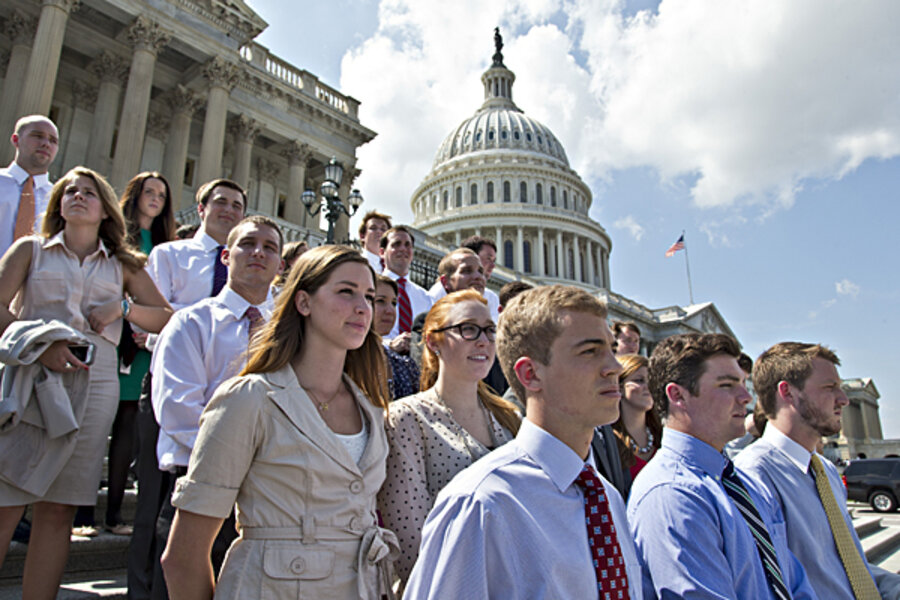Student loan rates battle: How the Senate's plans could affect you
Loading...
The Senate will vote today on a proposal to lower interest rates on subsidized federal loans, which doubled for 7 million students last week after lawmakers failed to strike a deal. There are two main proposals on the table: one, backed by Senate Democrats, will simply extend the previous interest rate of 3.4 percent for another year, while another, touted as a bipartisan effort, will peg interest rates to the US Treasury. If nothing happens, interest rates on Stafford loans will remain doubled, costing the average student borrower $2,600 when they take new loans out in the fall. With outstanding student loan debt exceeding $1 trillion, federal inaction could also aggravate the deficit. Here’s an overview of the proposals and their likely effects on students and the economy.
Senate Democrats: Return interest rates to 3.4 percent for one more year
At noon, the Senate will vote on Majority Leader Harry Reid’s (D-Nev.) proposal to return interest rates to 3.4 percent for one year. The proposal, if passed, would guarantee students taking out new Stafford loans that they would pay neither more nor less to borrow money than they have in the past year. It is the only plan on the table that will not cost students extra — at least, until the year is up and Congress returns to debating what to do with interest rates. It is also the plan that will most exacerbate the federal deficit. The research arm of banking giant Barclays estimates that federal inaction will lead to the Stafford program costing the government more than $100 billion over the next eight years.
With Republicans staunchly opposed to any temporary fixes, Reid’s plan is expected to fail Wednesday.
Bipartisan Senate proposal: Peg interest rates to Treasury notes, but cap loan consolidations
A bipartisan plan proposes tying interest rates to the financial markets. If it passes, student borrowers will pay 3.6 percent interest rates on new Stafford loans — significantly less than they would pay if Congress does nothing, but slightly more than they would under Reid’s plan. The interest rates on their loans will be fixed for the life of the loan, meaning students will not have to worry about rates on old loans creeping up over the time they take to pay their debt off. Students will also be guaranteed that when they consolidate their loans, interest rates will be capped at 8.25 percent.
As the economy improves, however, borrowers could end up paying much higher interest rates. There is no cap on how high interest rates could get because, each academic year, rates for new loans will be set according to the Treasury’s borrowing rate (as opposed to being fixed at 3.4 percent). Opponents of the proposal say by 2018, students could wind up paying 7.1 percent interest rates on new loans.
With the risk of allowing interest rates to soar to untenable levels, the plan has been panned by some Senate Democrats. Republicans, however, are backing the proposal, which could save the government $960 million over the next 10 years as the number of student borrowers continues to swell.








